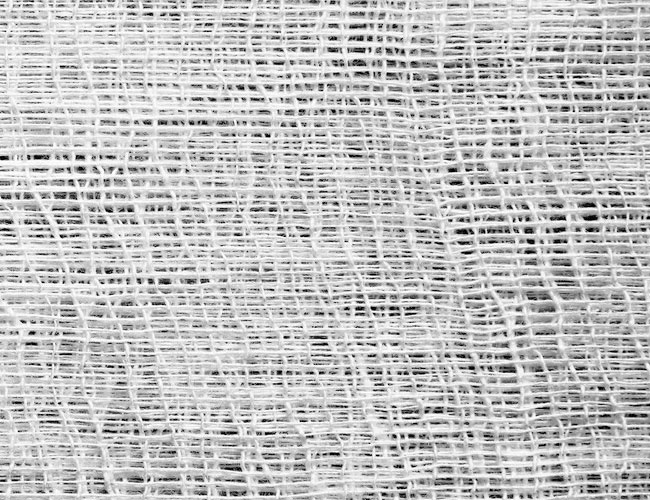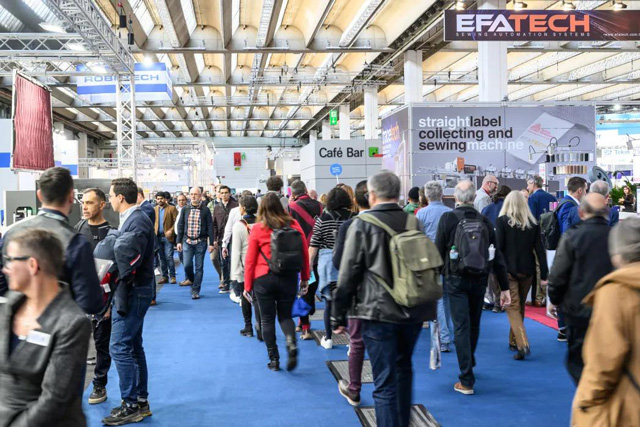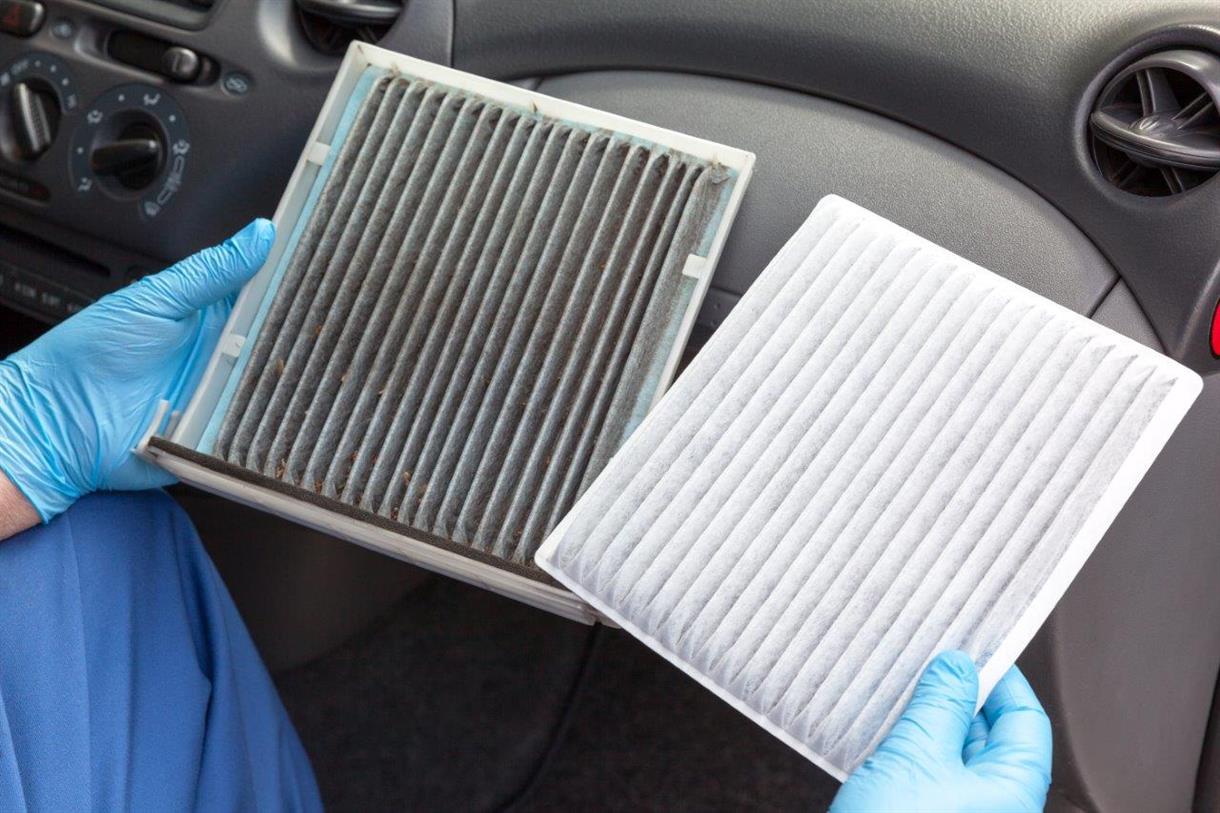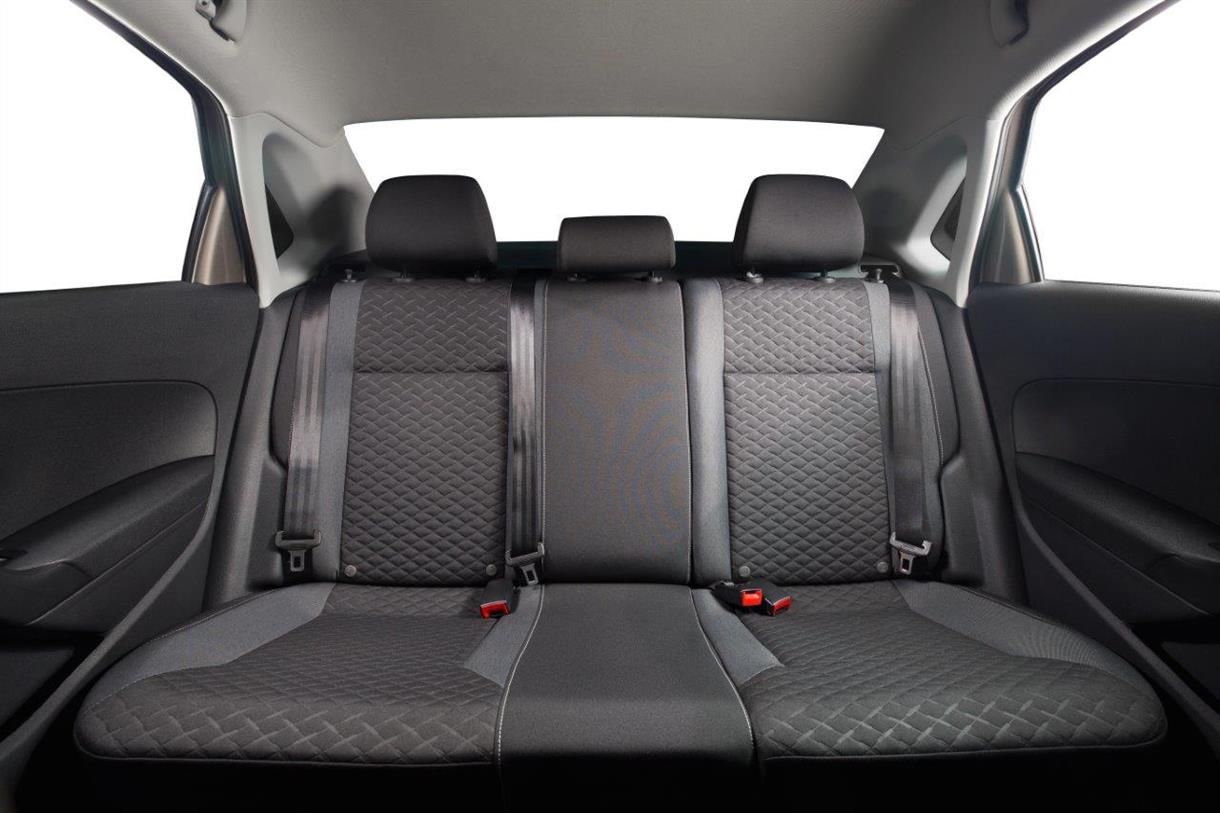
The voile fabric is a lightweight, sheer fabric that is usually made from cotton or cotton blends, although it can also be constructed from other materials like polyester or silk. The word "voile" is of French origin and means "veil," which is fitting because of its translucent and airy nature. Voile fabric is known for its soft and smooth texture, making it a popular choice for a variety of clothing and home decor items.
The history of voile fabric is closely tied to the development of textile manufacturing and trade. While it's challenging to pinpoint the exact origins of voile, we can trace the evolution of sheer and lightweight fabrics through various historical periods.
1. Ancient and Medieval Times:
Sheer and lightweight fabrics have been used for centuries in various cultures. In ancient times, silk was a popular choice for creating lightweight and delicate textiles. In the medieval era, fine linens and cotton were also utilized for similar purposes. The concept of sheer and airy fabrics likely emerged organically as people sought textiles that were comfortable in warm weather.
2. 17th to 19th Centuries:
As European trade expanded, so did the availability of different textiles. Cotton became more accessible in Europe, and various lightweight cotton fabrics gained popularity. The industrial revolution in the 18th and 19th centuries further transformed textile production, making fabrics more affordable and widespread.
3. Influence of French Fashion:
The term "voile" itself is of French origin, meaning "veil." France has long been influential in the world of fashion and textiles. Sheer and lightweight fabrics, including voile, were used in French fashion, contributing to the fabric's association with elegance and sophistication.
4. 20th Century:
The 20th century saw advancements in textile technology, allowing for the production of even finer and more sheer fabrics. Voile became a popular choice for women's clothing, especially for dresses, blouses, and lingerie. The lightweight and breathable nature of voile made it ideal for warm-weather garments.
5. Contemporary Use:
Voile continues to be a popular fabric in contemporary fashion and home decor. Its versatility, softness, and sheer quality make it suitable for a range of applications, from casual summer dresses to elegant curtains. With modern manufacturing techniques, voile is now available in various colors, prints, and blends, expanding its appeal to a broader audience.
In summary, the history of voile fabric is intertwined with the broader history of textile development, trade, and fashion. It has evolved over the centuries, adapting to changing preferences, technologies, and global influences, while maintaining its reputation for delicacy and elegance.



The production of voile fabric involves several steps, from selecting raw materials to weaving and finishing. Here is a general overview of the process of making voile fabric:
1. Raw Material Selection:
The primary raw material for voile fabric is typically cotton, though blends with other fibers like polyester or silk are also common. The choice of raw material depends on the desired characteristics of the final fabric, such as softness, sheerness, and breathability.
2. Cotton Cultivation and Harvesting (if cotton is used):
If cotton is the chosen fiber, it undergoes cultivation and harvesting. Cotton is grown in warm climates and harvested when the fibers have matured.
3. Ginning:
After harvesting, the cotton undergoes ginning to separate the cotton fibers from the seeds and other impurities. Ginning is the process of mechanically separating the cotton fibers from the seeds.
4. Spinning:
The cleaned and separated cotton fibers are then spun into yarn. Spinning can be done using traditional spinning methods or modern spinning machines.
5. Weaving:
The spun yarn is woven into the fabric using a loom. In the case of voile, a lightweight and open weave are employed to create the sheer and airy quality of the fabric. The specific weaving pattern can vary, but it often involves a plain weave or a leno weave, which enhances the fabric's drape and transparency.
6. Finishing:
After weaving, the fabric undergoes various finishing processes to enhance its properties. These processes may include bleaching to achieve a white or light color, dyeing to add color, and additional treatments to improve softness and texture. The finishing stage is crucial in determining the final characteristics of the voile fabric.
7. Setting and Sizing:
Voile fabric may go through a setting process to stabilize its dimensions and improve its resistance to wrinkles. Sizing, which involves applying a starch or similar substance, may also be done to add body to the fabric and enhance its drape.
8. Quality Control:
Throughout the manufacturing process, quality control measures are implemented to ensure that the fabric meets specified standards for sheerness, weight, color, and other characteristics.
9. Cutting and Packaging:
Once the voile fabric is produced and meets quality standards, it is cut into rolls or sheets and packaged for distribution.
The exact details of the process may vary depending on the manufacturer and the specific type of voile being produced. Additionally, advancements in technology and changes in manufacturing practices can influence certain steps in the production process.
1. Sheerness: Voile is known for its transparency, allowing light to pass through. This sheer quality makes it an ideal fabric for creating delicate and ethereal garments.
2. Lightweight: Voile is very lightweight, which adds to its comfortable and breathable feel. It is often used for summer clothing or as a layering fabric.
3. Smooth Texture: The fabric has a soft and smooth texture, providing a pleasant feel against the skin.
4. Drape: Voile has a good drape, making it suitable for flowing and elegant designs. It is commonly used for dresses, skirts, blouses, and scarves.
5. Versatility: While voile is often associated with clothing, it is also used in home decor, such as curtains, drapes, and bed linens. Its sheer quality allows for the diffusion of light, creating a light and airy atmosphere.
6. Breathability: Due to its lightweight nature, voile fabric is breathable, making it comfortable to wear in warm weather.
7. Variety of Colors and Prints: Voile is available in a wide range of colors and can be found in both solid colors and prints. This versatility makes it suitable for various design preferences and applications.
Voile fabric offers several advantages, making it a popular choice for various applications in both clothing and home decor. Here are some of the key advantages of voile fabric:
1. Sheerness: One of the most defining characteristics of voile fabric is its sheer quality. This makes it an excellent choice for creating light and airy garments or curtains that allow diffused light to pass through.
2. Lightweight: Voile is a lightweight fabric, which contributes to its comfort when worn and makes it suitable for warm weather. It drapes well and does not feel heavy or restrictive.
3. Soft Texture: Voile has a soft and smooth texture, providing a comfortable and pleasant feel against the skin. This quality makes it popular for clothing items like dresses, blouses, and scarves.
4. Breathability: Due to its lightweight nature, voile is breathable, allowing air to pass through. This makes it a comfortable choice for summer clothing, ensuring that the wearer stays cool.
5. Versatility: Voile fabric is versatile and can be used for various applications. It is commonly used in clothing, such as dresses, blouses, and lingerie, as well as in home decor for curtains, drapes, and bed linens.
6. Drape: Voile has a good drape, meaning it falls and hangs elegantly. This quality is particularly desirable in clothing, as it contributes to a graceful and flowing appearance.
7. Variety of Colors and Prints: Voile is available in a wide range of colors and can be found in both solid colors and prints. This versatility allows for creative and diverse design options to suit different preferences.
8. Elegance and Sophistication: The sheer and delicate nature of voile fabric imparts an elegant and sophisticated look. This makes it a popular choice for creating refined and stylish garments and home decor items.
9. Easy to Care For: Voile fabric is often easy to care for, with many varieties being machine-washable. This convenience adds to its appeal for both clothing and home applications.
10. Timeless Appeal: The timeless and classic look of voile fabric ensures its enduring popularity. It can be used in a variety of styles, from casual to formal, making it a versatile choice for different occasions.
Overall, the advantages of voile fabric make it a favored material for those seeking a combination of style, comfort, and functionality in their clothing and home decor choices.
While voile fabric offers many advantages, it also has some disadvantages that individuals should consider when choosing it for specific applications. Here are some of the potential drawbacks of voile fabric:
1. Durability: Voile fabric is generally lightweight and delicate, which may affect its durability over time. It may be more prone to wear and tear compared to heavier and more robust fabrics.
2. Wrinkling: Due to its lightweight nature, voile fabric can be prone to wrinkling. This may require more careful handling and ironing, particularly if the fabric is used for clothing that needs to maintain a smooth appearance.
3. Transparency: While the sheerness of voile is an advantage for certain applications, it can be a disadvantage if more opacity is desired. In certain clothing items or home decor applications, the transparency of voile may not provide sufficient coverage.
4. Care Requirements: Some voile fabrics may have specific care requirements. For example, certain types may need gentle washing or dry cleaning to maintain their appearance and texture. Always check the care instructions for the specific voile fabric you are using.
5. Limited Insulation: Voile's lightweight and breathable nature mean it provides limited insulation. This may not be ideal for certain weather conditions or for those seeking fabrics with more substantial warmth.
6. Color Fading: Depending on the quality of the dye and finishing processes, voile fabric may be susceptible to color fading over time, especially with frequent washing or exposure to sunlight.
7. Availability in Wide Widths: Voile fabric is typically available in narrower widths compared to some other fabrics. This may be a consideration for larger sewing or home decor projects that require wider fabric.
8. Pilling: In some cases, voile fabric may be prone to pilling, especially in areas of friction or high wear. Pilling refers to the formation of small, fuzzy balls on the fabric's surface.
9. Cost: High-quality voile fabric, especially those made from natural fibers, can be relatively expensive compared to other lightweight fabrics. This may be a consideration for individuals on a tight budget.
10. Static Electricity: Voile fabric may generate static electricity, especially in dry conditions. This can lead to the fabric clinging to the body, which may be undesirable in certain clothing applications.
It's important to note that the disadvantages mentioned can vary depending on the specific type of voile fabric, its composition, and its intended use. When choosing a fabric, individuals should carefully consider their preferences and the requirements of the intended project.
There are various types of voile fabrics, each with its characteristics and applications. The choice of voile fabric depends on factors such as fiber content, weave, and finishing processes. Here are some common types of voile fabrics:
1. Cotton Voile:
- Characteristics: Cotton voile is made entirely from cotton fibers. It is known for its softness, breathability, and natural feel.
- Applications: Cotton voile is commonly used in summer clothing, such as dresses, blouses, and skirts. It is also used for lightweight curtains and drapes.
2. Polyester Voile:
- Characteristics: Polyester voile is made from synthetic polyester fibers. It can have a similar appearance to cotton voile but may have different characteristics, such as increased durability and resistance to wrinkling.
- Applications: Polyester voile is often used in clothing and home decor items where durability and easy care are priorities.
3. Silk Voile:
- Characteristics: Silk voile is made from silk fibers, providing a luxurious and smooth texture. It has a natural sheen and drapes elegantly.
- Applications: Silk voile is used in high-end fashion for dresses, blouses, and scarves. It can also be used for delicate curtains and other home decor applications.
4. Blended Voile:
- Characteristics: Blended voile fabrics combine different fibers, such as cotton and polyester, to achieve a balance of qualities from each material.
- Applications: Blended voile fabrics may offer a combination of softness, breathability, and durability, making them suitable for various applications in both clothing and home decor.
5. Printed Voile:
- Characteristics: Printed voile features patterns or designs printed onto the fabric surface. This can include floral prints, geometric patterns, or other decorative motifs.
- Applications: Printed voile adds a decorative element to clothing items like dresses and blouses. It is also used for creating visually appealing curtains and drapes.
6. Embroidered Voile:
- Characteristics: Embroidered voile has decorative stitching or embroidery added to the fabric. This can be intricate patterns or simple embellishments.
- Applications: Embroidered voile is often used for special occasion clothing, such as evening dresses or wedding gowns. It can also be used for decorative curtains.
7. Crinkled Voile:
- Characteristics: Crinkled voile is intentionally processed to create a textured, crinkled appearance. This texture adds a unique visual element to the fabric.
- Applications: Crinkled voile is used for casual and relaxed clothing items, as well as for curtains and drapes that benefit from a more casual, textured look.
When choosing a type of voile fabric, consider the specific qualities you need for your project, such as softness, sheerness, durability, or decorative features. The type of voile you select will depend on your preferences and the intended application of the fabric.
Voile and cotton are related terms, but they refer to different aspects of the fabric. "Voile" is a type of fabric known for its sheerness and lightweight nature, while "cotton" refers to the fiber used in the fabric. Let's explore the difference between the two:
1. Voile:
- Definition: Voile is a type of fabric characterized by its sheer and airy quality. It is often made from cotton, but it can also be constructed from other fibers like polyester or silk.
- Characteristics:
- Sheer: Voile is known for its transparency, allowing light to pass through.
- Lightweight: It is a very lightweight fabric, making it comfortable and breathable.
- Soft Texture: Voile has a soft and smooth texture against the skin.
- Drapability: Voile has a good drape, contributing to its flowing and elegant appearance.
2. Cotton:
- Definition: Cotton, on the other hand, is a natural fiber obtained from the cotton plant's seed fibers. It is a widely used fiber in the textile industry.
- Characteristics:
- Natural Fiber: Cotton is a plant-based natural fiber.
- Breathable: Cotton fibers are breathable, making them comfortable to wear, especially in warm weather.
- Softness: Cotton is known for its softness and comfort against the skin.
- Versatility: Cotton fibers are versatile and can be used in various types of fabrics, including voile.
3. Key Differences:
- Material vs. Fabric: Cotton refers to the fiber itself, while voile is a type of fabric made from various fibers, including cotton.
- Transparency: Voile is inherently sheer, while cotton itself is not necessarily transparent. The sheerness of voile comes from the specific weave and construction used in the fabric.
- Weight and Texture: While cotton can be used to make a variety of fabrics, including heavier ones, voile specifically refers to a lightweight and sheer fabric often associated with warm-weather clothing.
Voile fabric is versatile and finds use in various applications in both clothing and home decor. Its lightweight and sheer qualities, along with its soft texture, make it suitable for a range of purposes. Here are some common uses of voile fabric:
I. Home Decor:
1. Curtains and Drapes:
- Voile is a popular choice for curtains and drapes, especially in rooms where diffused light and a light, airy atmosphere are desired. It can add a touch of elegance to windows.
2. Sheers and Overlays:
- Voile is often used as sheer overlays for other fabrics, adding a layer of delicacy and sophistication to curtains, tablecloths, or other decorative elements.
3. Bedding:
- Voile can be used for bedspreads, duvet covers, and pillow shams, providing a soft and breathable layer for the bed.
4. Canopy or Bed Drapes:
- Voile fabric can be used to create a dreamy and romantic canopy or bed drapes for whimsical bedroom decor.
5. Table Runners and Napkins:
- Voile's lightweight and elegant appearance make it suitable for table runners, napkins, and other tabletop decor items.
II. Special Occasion Wear:
1. Wedding Dresses:
- Voile, especially in combination with lace or embroidery, is used in wedding dresses to create a romantic and ethereal look.
2. Formal Gowns:
- The soft drape of voile makes it a suitable choice for formal gowns, adding a touch of sophistication to evening wear.
III. Craft and DIY Projects:
1. Crafting and Sewing:
- Voile is often used in various crafting and sewing projects, including quilting, making accessories, and creating soft toys.
2. DIY Home Decor:
- Individuals often use voile in DIY home decor projects, such as making custom curtains, throw pillows, or lampshades.
IV. Clothing:
1. Dresses:
- Voile is often used to create light and flowing dresses, especially for warm weather. Its sheer and breathable nature makes it comfortable for casual or formal occasions.
2. Blouses and Tops:
- Voile is a popular choice for blouses and tops, providing a delicate and elegant look. It can be used for both everyday wear and more formal attire.
3. Skirts and Tunics:
- The drape and softness of voile make it suitable for skirts and tunics, adding a feminine and breezy quality to the garments.
4. Scarves and Shawls:
- Voile's lightweight nature makes it ideal for scarves and shawls. It can provide a touch of warmth without being too heavy.
5. Lingerie:
- Due to its soft texture, voile is sometimes used in the construction of lingerie items, adding a touch of luxury and comfort.
How to wash Voile Fabric? Cleaning and maintaining voile fabric require a gentle approach to preserve its delicate nature. Here are some general guidelines for cleaning and maintaining voile fabric:
### Cleaning:
1. Hand Washing:
- Hand washing is often the safest method for cleaning voile fabric. Use a mild detergent and lukewarm water.
- Gently agitate the water to wash the fabric, avoiding any harsh rubbing or wringing.
2. Machine Washing:
- If the care instructions allow for machine washing, use a gentle cycle with a mild detergent.
- Place the voile fabric in a mesh laundry bag to prevent it from tangling or snagging in the machine.
3. Avoid Harsh Chemicals:
- Do not use harsh chemicals, bleach, or strong detergents, as they can damage the delicate fibers of the voile fabric.
4. Separate Colors:
- Wash colored voile fabrics separately to prevent color bleeding or fading.
### Drying:
1. Air Drying:
- Air drying is the preferred method for voile fabric. Hang it in a well-ventilated area, away from direct sunlight.
- Smooth out wrinkles by gently pulling and arranging the fabric while it's damp.
2. Avoid Machine Drying:
- Avoid machine drying as it can cause shrinkage and damage to the fabric due to the heat.
### Ironing:
1. Low Heat:
- If ironing is necessary, use a low heat setting. Voile fabric is susceptible to heat, so be cautious to avoid scorching or melting.
2. Steam:
- Use a steamer to remove wrinkles gently. Hold the steamer a few inches away from the fabric to prevent damage.
### Storage:
1. Avoid Sunlight:
- Store voile fabric away from direct sunlight to prevent fading.
2. Breathable Storage:
- Store voile items in a cool, dry place, and avoid plastic bags or airtight containers, as moisture can accumulate.
3. Avoid Rough Surfaces:
- Keep voile fabric away from rough surfaces that can snag or tear the delicate fibers.
### Spot Cleaning:
1. Immediate Action:
- Attend to spills or stains promptly. Blot the affected area gently with a clean, absorbent cloth.
2. Mild Cleaning Agents:
- Use mild cleaning agents suitable for delicate fabrics. Test in an inconspicuous area first.
3. Professional Cleaning:
- For valuable or intricate voile items, consider professional dry cleaning to ensure proper care.
Voile fabric itself is not inherently harmful.
However, like any textile, it can be treated with various chemicals or finishes during the manufacturing process. The potential for harm depends on factors such as the specific type of voile, any added treatments, and individual sensitivities or allergies.
Here are some considerations:
1. Chemical Treatments:
- Some voile fabrics may undergo treatments such as flame retardants, stain repellents, or wrinkle-resistant finishes. The chemicals used in these processes can vary, and certain individuals may have sensitivities or allergies to specific substances.
- Always check the care label and product information for details on any treatments applied to the voile fabric.
2. Dyes:
- The dyes used to color voile fabric can be either natural or synthetic. While many dyes are safe, some people may have allergies or sensitivities to certain dye types.
- If you have known sensitivities or skin allergies, it's a good idea to perform a patch test on a small, inconspicuous area of the fabric to check for any adverse reactions.
3. Environmental Impact:
- Consider the environmental impact of the manufacturing process and any chemicals used. Sustainable and eco-friendly manufacturing practices may be important to some individuals.
4. Care and Cleaning Products:
- The cleaning agents used on voile fabric can also impact its safety. Always follow care instructions and use mild, non-toxic detergents or cleaning agents.
5. Ventilation:
- If voile curtains or drapes are used in the home, ensure proper ventilation. Some individuals may be sensitive to the off-gassing of chemicals from treated fabrics.
6. Natural Fiber Options:
- If concerns about potential harm or allergies arise, choosing voile fabric made from natural fibers like organic cotton or silk can be a safer option, as they are less likely to have synthetic additives.
This is the end of the introduction of Voile Fabric, If you want to know more about the latest information, you can pay attention to our.
G&F GROUP INC. is an experienced company with a wide network of suppliers and abundant resources of fabric products. We are able to customize fabrics to meet our customer's needs and have accumulated 20 years of export experience. This means that they can deliver and clear customs quickly, which is very helpful in meeting tight delivery deadlines and fast customs clearance.
G&F GROUP INC. has accumulated 20 years of export experience, which has given them an in-depth knowledge of the needs and trends of the international market. This experience enables them to better understand the needs of their customers and provide products and services that meet international standards.
G&F GROUP INC. works with hundreds of domestic suppliers, which enables them to obtain a stable and reliable supply of products. This partnership gives them access to a wide range of fabric product resources, thus providing customers with more choices. Fabrics can be customized to meet the needs of their customers, which allows them to meet their specific needs and provide personalized solutions. This customization allows customers to have access to fabric products that meet their specific requirements, thus better meeting their design and production needs.
Come and contact us soon, thank you.
All Rights Reserved: https://www.groupgf.com/info-detail/voile-fabric
Copyright Notice: This is an original (translated) article from G&F Group Inc., please indicate the source from G&F GROUP INC... If there is any infringement, please contact us first.
 Techtextil & Texprocess Rounded Off
Techtextil & Texprocess Rounded Off
 Nonwovens in daily life ----- filtration
Nonwovens in daily life ----- filtration
 Nonwovens in daily life ----- automotive
Nonwovens in daily life ----- automotive
 What is SAP – superabsorbent polymers
What is SAP – superabsorbent polymers